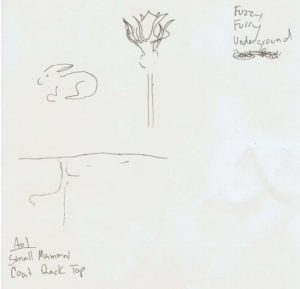Associative Remote Viewing, or ARV, is not a way of doing remote viewing. Instead, it is a way of using remote viewing to obtain a certain kind of information about the future. Any workable method of remote viewing can be used for an ARV project.
You can think of the function of ARV as a way of mentally “going into the future” to get information. The purpose of ARV is to help make decisions in the present about a future outcome or event.
Usually a binary-outcome event is involved. An example of a binary-outcome event would be a football game, where either one team will win, or the other will. (In many of these sorts of events, there is a slight chance that there will be a tie, but we’ll ignore that for this discussion.)
Another example is whether a stock will either go up or down in value by a certain future time, such as the closing bell of the stock market.
ARV has been explored by a number of researchers with some noteworthy success. Dr. Harold E. Puthoff and Russell Targ, both formerly the chief scientists for the SRI-International consciousness research program, each conducted experiments with real money involved, focusing on the silver futures market. With the goal of funding a non-profit Waldorf school, Puthoff’s project netted $250,000 for the wealthy investor who commissioned the project, ten percent of which (approximately $25,000) went to Puthoff and his non-profit board of directors, with which they established the school. A similar ARV project Targ conducted with associate Keith Harary netted $120,000. (All was not fun and games, however. In a subsequent project Targ and Harary tinkered with the protocol and lost money. A third experiment some years later in which Targ worked with researcher Jane Katra again found success.) There have been many similar attempts made by a variety of people since, many successful, but branching out from silver futures to the stock market, sports betting, and currency exchange. Here is a peer-reviewed scientific article giving just one example.
How associative remote viewing (arv) Works

Associative remote viewing works by first having someone who will not be doing the remote viewing assign a descriptive target to stand for each possible outcome of a future event. In the past, objects that were significantly different from each other were used as ARV targets. For example, a pencil might be used to stand for one team winning, and an apple for the other team winning. Currently, photographs that are significantly different from each other (as the example to the right shows) are more frequently used as targets, since they are easier to manage.
Let’s say we want to know today who will win the football game tomorrow between Brigham Young University Cougars and the University of Texas Longhorns (Paul’s two football-playing alma maters!). So let’s pick an apple to stand for the Longhorns winning, and a pencil to stand for BYU winning (we are thus “associating” the apple with the Longhorns winning and the pencil with BYU winning).

We then ask our remote viewers to describe the object that they will be presented the morning after the football game is over. If during the remote viewing session the viewers describe something round, red, and sweet-smelling, we conclude that they have perceived the apple in the future. This means the Longhorns will win. Then whatever desired action can be taken. In places where it is legal, this usually means a bet is placed that the Longhorns will win.
For the sake of this example, let’s say the Longhorns do win. So the next step is to show the viewers the apple on the following morning. This is what is called “closing the feedback loop.” If everything goes well, you’ll make money on the wager!
But let’s say there is an upset. Even though the viewers described the apple, BYU wins. If that happens it means that, no matter how well the viewers described the apple, the following morning during the feedback event, you have to show the viewers the correct target—in other words, you have show them the pencil.
This is because in this second “upset” case, the viewing was wrong—and it happens about 30% of the time in ARV. Describing the wrong target is called “displacement,” and it can happen for any number of reasons—all of which we cover in our Associative Remote Viewing Course. Counterintuitive as it may sound, you have to show the viewers the correct target, no matter how well they described the wrong one. This is so that in the long term they will (hopefully) learn to describe the correct target more reliably.
This may seem to you to be an overly complicated way to predict the future. But there is a reason for it. In previous remote viewing research, the scientists discovered that if you “front load” a viewer by asking who will win the game, the response will usually be no better than chance—there will only be a 50/50 likelihood that he or she will be right. In other words, it would essentially be a guess.
The reason for this is that the conscious mind gets involved, and tries to come up with a rational answer to a question for which there is no available information yet—the outcome of a future event. When the rational mind lacks sufficient information, it resorts to guessing.
So the researchers decided to leverage what remote viewing does best: describe things. In remote viewing the waking “rational” consciousness is by-passed. The viewer’s subconscious does most of the work, accessing information about the target subliminally. And as far as the subconscious is concerned it doesn’t matter whether that target is in the past, present or future. But this means the tasking can’t be direct—there’s no way you can ask the subconscious whether the Cougars or the Longhorns are going to win without it still boiling down to a guess.

Remote viewing pioneer Stephan Schwartz takes credit for having invented the principle of associative remote viewing. He says he got the idea from naval vessels sending complex instructions to each other by using signal flags. Each different signal flag was assigned a meaning–for example, a red flag might mean “reverse course and open fire on enemy vessels,” while a white one might be “all clear, head to the bay in formation and anchor.” The difference in ARV is that we use objects like apples and pencils (or different photos of various scenes or objects) and we are “looking” at them in the future, rather than present.
So you could think of ARV as “signal flags” from the future or, as we like to say “Messages from your [future] mind!”
Click here to find out how you can learn Associative Remote Viewing in our acclaimed “Messages From Your Mind” course.
**And you can access the full Hamster/Bicycle ARV research report here.